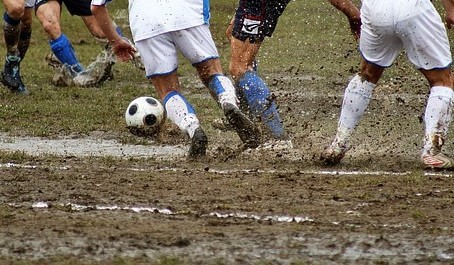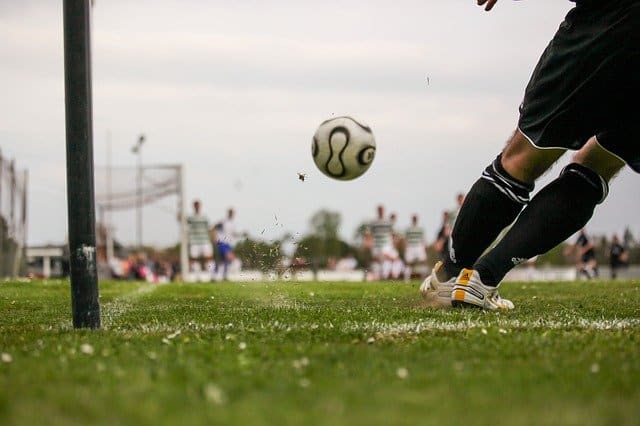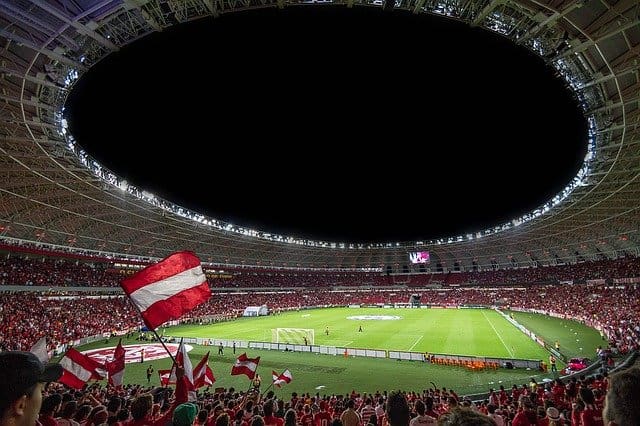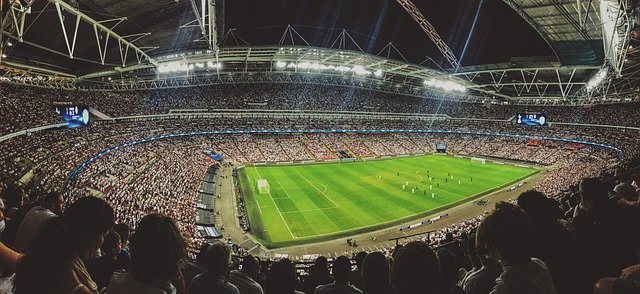Most of the sports that are played on a 2-sided field force the competing teams to switch sides at some point during a match. Soccer is one of these sports. In other words, the soccer rules force the competing teams to switch sides at halftime. But why?
The quick and simple answer is that switching sides at halftime in soccer ensures that the game is fair for both teams. Switching sides at halftime evens out the advantages that a soccer team might get due to any problems in the field, the sunlight direction, the wind direction, and many other factors.
But, does the side on which a team is playing really affect the team’s performance by a noticeable factor?
Yes. Sometimes it does, especially in soccer since soccer is an outdoor game that requires you to kick the ball instead of holding it with your hands (which means that wet grounds are a problem). And that’s why switching sides during a soccer match is important.
Here are 6 reasons why soccer teams are required to switch sides on halftime.
1- The defects on one side of the field
Not all soccer fields are perfect. Not all soccer clubs can afford the high maintenance that soccer fields require.
After all, soccer fields are very large, and these fields are usually made up of natural grass that needs constant maintenance in order to stay perfect. But not all soccer teams can afford that.
For this reason, you might notice that some soccer fields do not have grass on a few parts of the field and they usually have soil or mud instead if it’s raining. To make sure that none of the competing teams gets an advantage due to such defects on the field, switching sides on halftime is the answer.

If you only watch the top soccer leagues, then you might not see a lot of these defects on the soccer fields since most of the clubs that compete in these leagues have enough money to be able to cover any maintenance expenses for their fields.
But remember, the soccer rules are made with all clubs in mind and not just the rich clubs. Defects in a soccer field are extremely common among smaller soccer clubs.
Also, switching fields can eliminate the chances that a soccer team intentionally damages the part of the field that their opponent is going to play at.
If switching teams at halftime wasn’t a thing, then the soccer teams who are playing at their home stadium can use some tricks on the field like the length of the grass to gain advantage against their opponents. But this advantage is eliminated once you introduce the rule that forces teams to switch sides on halftime.
2- The direction of the wind
The wind direction is a huge advantage to soccer clubs. Many professional soccer games are played during extreme weather conditions. Some games were even played in the snow.
In other words, strong winds will not cancel or postpone a soccer game, and the teams playing have to deal with it.
While wind can definitely change its direction, it usually maintains certain directions for a period of time, so switching sides at halftime is an attempt to reduce the effect that the wind has on the results of the game.
But how can the wind help a soccer team?
The wind can help a soccer player score a goal during a corner kick. If the wind is directed towards the net, then all of what the corner kick taker has to do is to kick the ball in front of the goal with enough strength and the wind will curve it towards the net which makes it harder for the goalkeeper to block the ball.

The wind can also make it harder to pass the ball, kick the ball accurately, and control the ball in general if the team is facing the direction of the wind.
In other words, the direction of the wind can give an advantage to one team over the other and switching sides on halftime is an attempt to give this advantage to both teams instead of only one.
3- The direction of the sun
If a soccer game is being played in the morning or before sunset, then the direction of the sun rays can affect the goalkeepers.
If the sun is directly in the face of the goalkeeper, then they’ll have a hard time seeing the ball clearly and thus their performance will be affected.
It’s possible that by the time the teams switch sides, the sun is gone because 45 minutes is not a short duration. But still, deciding to switch is still better than nothing.
4- The slopes of the soccer fields
Usually, soccer fields are designed with consistent slopes in order to solve some water drainage problems.
These slopes are supposed to start from the center and then spread to the edges of the field and they are usually extremely small to the point that they don’t have any effects on the players.
However, not all of these slopes are consistent and smooth enough. Also, there are soccer fields that have slopes due to the nature of the ground that they exist on and due to the low budget of the owners of these fields.
So, in order to eliminate any advantages due to the slopes of the soccer fields, switching sides on halftime is a must.
5- The pressure from the fans on the sides of the field
The pressure from the fans is real. Goalkeepers have to deal with the thousands of their opponent’s supporters throughout a soccer match.
There are stadium seats that are very close to the goalkeeper’s net. In other words, a goalkeeper can hear the chants and the words of the close fans, and not all of these chants are meant to support the goalkeeper.
Usually, the fans of one team will sit in one side of the stadium and the fans of the opponent team will sit on the other side.
This means that switching sides at halftime will give the goalkeepers a chance to play while they’re next to their club’s fans for 45 minutes instead of having to play in front of the opponent’s fans for the whole game.
6- The fans’ entertainment
This is one of the most important reasons why soccer clubs switch sides at halftime. At the end of the day, soccer is all about entertainment, and entertaining the audience is always kept in mind when it comes to the soccer rules.
The fans who are watching the game from the middle seats will get a great view throughout the whole game. However, the fans who are sitting behind the nets do not always have a great view of the field.

Switching sides at halftime gives the fans behind the nets a chance to watch their team attack and score goals for at least half of the soccer game.
When a big soccer team is facing a weak soccer team. Then it’s more likely that most of the goals that will be scored during the game are going to be from one side.
So, in order to give the fans who are sitting behind the nets a chance to watch at least some of the goals scored during the game, teams will have to switch their sides at halftime.
With that said, I’ll end my list here. Here’s a quick summary of what you have just read.
SUMMARY
Soccer requires that the competing teams switch sides during halftime to make sure that none of the teams have an advantage over the other due to any problems in one side of the field. Also, switching sides during halftime gives the fans sitting behind the nets a chance to watch their team clearly while they attack and score goals.

